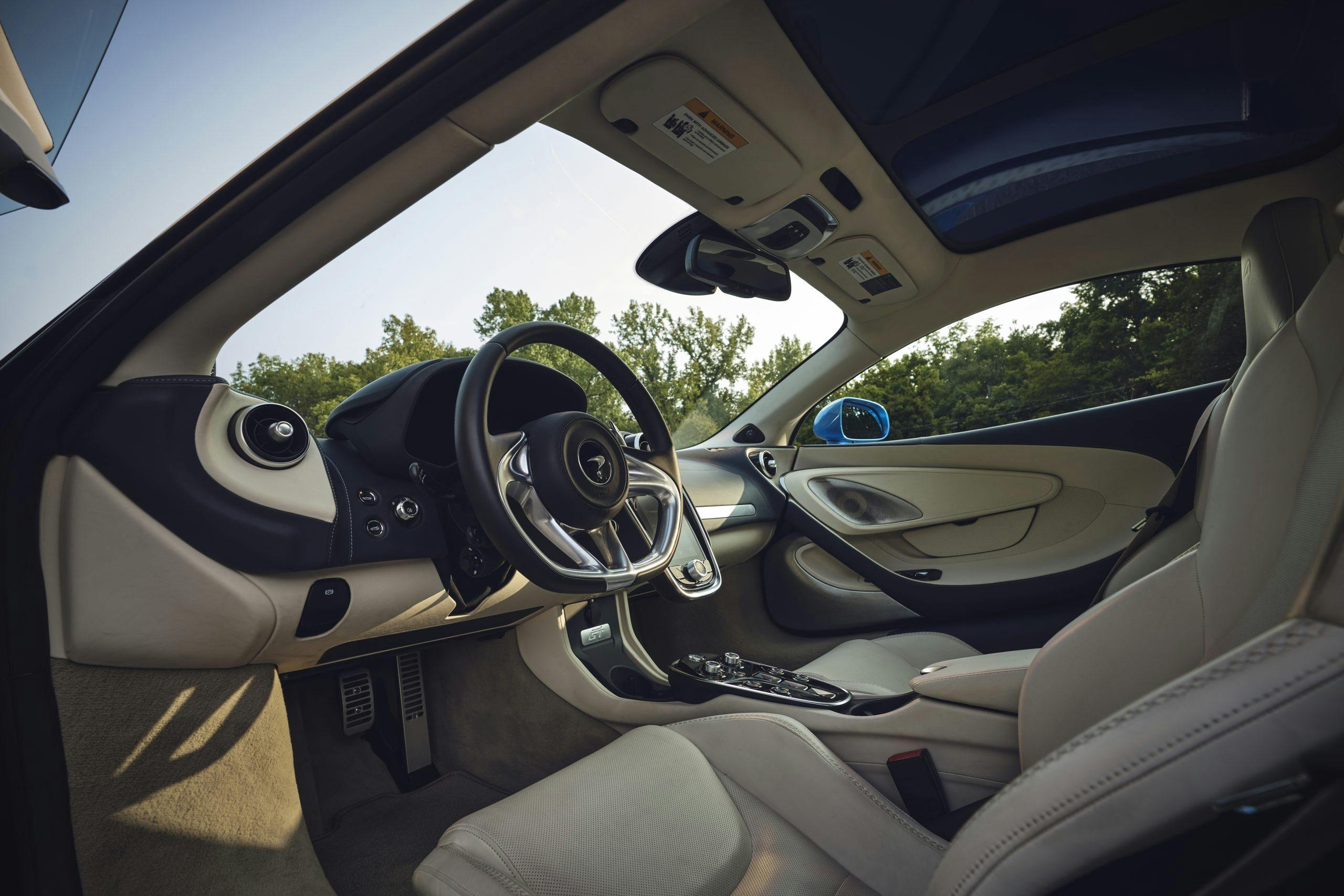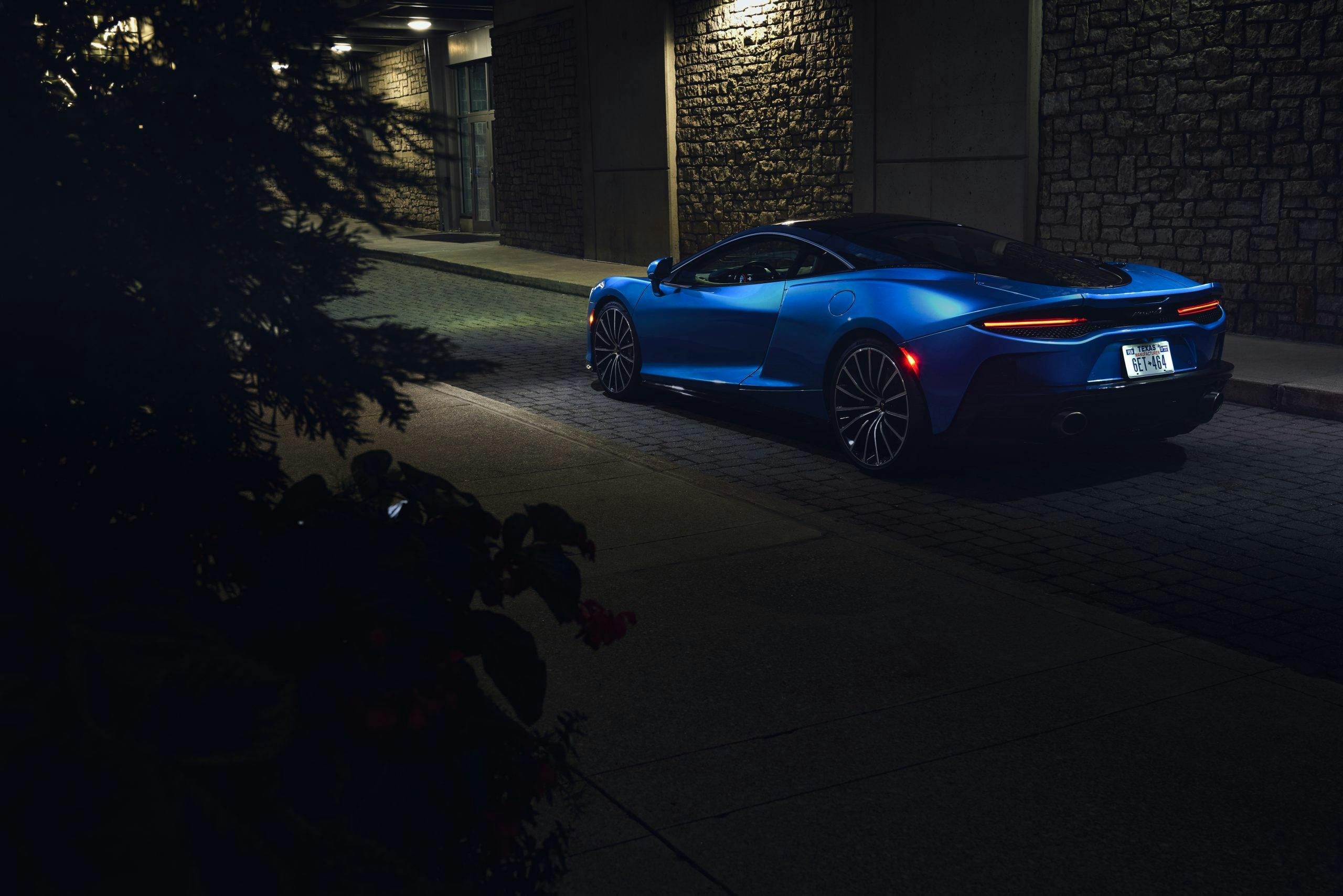Review: 2020 McLaren GT
If our membership data here at Hagerty is in any way accurate, then it’s reasonable to expect that a few of our members and readers are getting ready to take delivery of a new McLaren supercar right now. A few more are starting their search for such a car, while still more are narrowing down their potential choices from the broadest supercar market in history.
Listen up, all of you. You might think that you want a track-focused McLaren 600LT, or a warp-speed 720S, or possibly even that new Senna-on-a-budget, the 765LT. Alternately, you might be considering a Ferrari 488GTB, or even the 488 Pista. Before you sign on the dotted line for any of these, however, you need to take a serious look at the McLaren GT. It won’t be tough to do so—in an era where many boutique cars can be only be seen through a waiting list, darkly, the GT is in showrooms across the country, ready to roll. I suspect that the vast majority of McLaren buyers, and a few customers for the Italian supercars, would actually be happier with this car than with the ones currently headed for their driveways. Allow me to make the case for this in a thousand words, if you will.

Let’s get the tough parts out of the way first. The McLaren GT—not the greatest name, by the way, not in any way helped by its application to everything from Escorts to Grand Caravans—is a beautiful car from all angles, but it’s a touch generic in appearance. It doesn’t help that the front end is vaguely similar to that of the new Corvette, which is not a $260,000 car. This is the least outrageous-looking McLaren street car since the original MP4-12C. For some people, that’s a demerit.
That being said, there are some truly lovely contours in the GT’s styling, particularly in the fenders and quarter-panels. The wheels, larger in diameter than those fitted to any other McLaren, give this relatively long car a nice sense of proportion. Entry and exit still happens via the typical “dihedral” swing-up doors, but the sills are low and the seats aren’t tucked together quite as closely as they are in Woking’s other two-seaters. Those seats, by the way, are thousand-mile comfortable, even for, ahem, American-sized people, with a reasonable range of adjustment.

A new center-stack infotainment/climate system offers a larger screen but operates in the same relatively obscure fashion as it does in other McLarens. We were not able to force a “black screen” or infotainment reboot over the course of 700 miles behind the wheel, which is a nice improvement on previous variants. The HVAC system is stronger on the “H” side of the equation than the “AC” side; when the sun’s out you’ll want to have the optional electro-dimming roof panels which can darken through five shades instantly at the touch of an overhead panel. Audio is courtesy of a Bowers & Wilkins system that sets new standards for playback quality in a mid-engined British supercar but won’t impress anyone coming from a Burmester-equipped Porsche. The same is true for road noise, which is dampened to conversation level in the GT but won’t match more sedate competitors like a Mercedes SL or a non-GT Porsche 911.

A thorough revamping of the McLaren MonoCell chassis allows for a quilt-padded storage area behind the seats, accessible via a glass liftgate, over the engine compartment. A small set of golf clubs will fit, as would a soft-cased guitar. Expect whatever you put back there to get hot, both from the heat of the 612-hp, 465 lb-ft four-liter biturbo V-8 and from the sun’s unimpeded rays. Anything that needs to stay cool can go in the “frunk,” which could nicely double as a restriction box for regional-jet carry-on luggage.
Please don’t get the impression that I’m damning with faint praise here. In all of the above categories, the GT is head and shoulders above not only its McLaren stablemates but the competition from Ferrari and Lamborghini. Any place a C8 Corvette could go, including up some remarkably steep driveways, the GT can go. Compared to, say, a 675LT or a Senna, this is a luxury sedan. It’s just on the edge of being a plausible daily driver. In my hometown of Powell, Ohio, it would be easy as pie to use it that way. Those owners who live in Chicago or rural Texas might have a slightly tougher time of it. On an everyday basis the GT is massively more livable than a 720S or a Ferrari 488.

The problem for McLaren, of course, is that you don’t buy a car like this because it’s livable. You buy it for its performance credentials, regardless of whether or not you’re actually going to drive it that hard. This is where it gets a little tricky. The GT probably won’t keep up with the rest of the McLaren lineup around a race track—the relatively sane and rain-friendly Pirelli tires alone would make sure of that, along with the extra weight and separated seating position. Given that racetrack results comprise a large part of the brand’s appeal, this makes the GT a bit of an odd man out in the lineup. The near-Hayabusa level of straight-line thrust offered by the 720S is also conspicuous by its absence here. Yet this is still an extremely rapid vehicle with a sky-high top speed and tremendous levels of real-world grip, aided and abetted by a massively stiff chassis with thoughtful damping in both compression and rebound. Down a West Virginia two-lane the GT would likely be able to keep a 570S or 600LT in view due solely to the greater suspension compliance and broad torque curve.

So who’s the buyer for a car like this? It would have to be someone who wanted all the thrills of a mid-engined supercar but who also wanted to be able to use the car as much, and as often, as possible. Someone who cares about interior materials and quality (McLaren offers some gorgeous leathers and some outrageous customization possibilities via its MSO branch) more than they do about the last second of a weekend trackday lap time. In other words, this is a supercar for the folks designated by the late Gerald Levert as “the grown and sexy.” It’s also a bit of an Aston Martin killer. McLaren would be loath to admit it, but Ferrari Portofino buyers who would be satisfied with a glass top might also be in the crosshairs.
Gorgeous, comfortable, indecently fast, the McLaren GT is definitely not business as usual for the boutique British firm. They’d like you to view it as a junior take on the three-seat Speedtail; the buyers probably see it as a 650S with the wick turned down. Either way, it’s a tremendously satisfying vehicle to operate in at least three seasons of the year. It’s also the car that most prospective McLaren purchasers would be happiest with, if they’d just be willing to give it a shot. Most of them won’t. They’ll get a 570S to save a few bucks, a 600LT to show off, a 720S to establish social bona fides. It’s a shame, really. Perhaps McLaren should rename it. I’d suggest 612EX—612 horsepower, executive express. With a name like that, it would be a shoo-in.

2020 McLaren GT: $263,125, as tested
Highs: Brilliant real-world pace, all-day comfort, looks like a million bucks from most angles.
Lows: Looks like a Corvette from one angle, lacks traditional McLaren commitment (and transmission noise).
Summary: The most sensible and enjoyable mid-engined supercar ever made, for a microscopic audience of self-assured customers.













